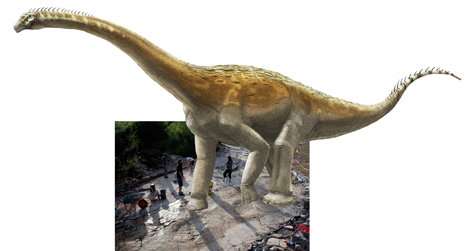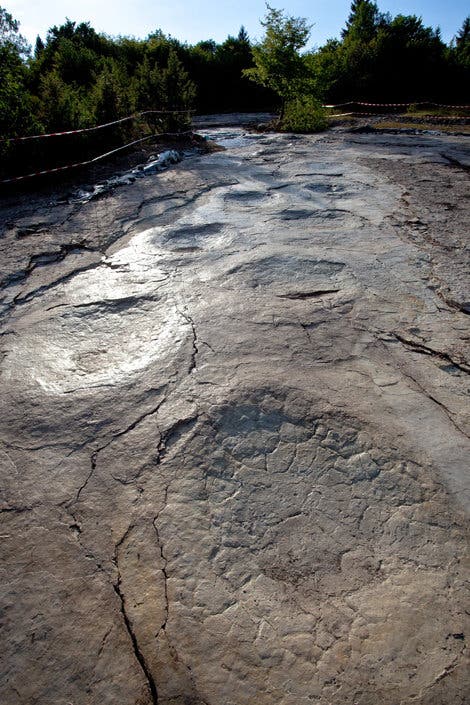In 2009, paleontologists made headlines after they discovered the world’s largest dinosaur tracks in Plagne, a French village nestled in the Jura Mountains. Since then, scientists have been busy, carefully excavating the site where they uncovered more tracks. Together, the huge dinosaur prints form the longest sauropod trackway found thus far, sprawling over more than 150 meters (490 feet).
The initial sauropod prints were discovered by members of the Oyonnax Naturalists’ Society. Between 2010 and 2012, a team supervised by the Laboratoire de Géologie de Lyon explored a meadow covering three hectares. Eventually, the paleontologists learn that the footprints belonged to a 110-step trackway extending over 155 meters.
It was sauropods, the largest dinosaurs ever to have walked the Earth, that etched the trackway. Judging from the limestone layers onto which the trackway was embedded, paleontologists estimate the prints were formed 150 million years ago during the Early Tithonian Age of the Jurassic.
Everything about sauropods was over the top. They were large, four-legged, plant-eating dinosaurs which could grow to 30 meters (100 feet) in length and could weigh up to 50 tonnes. The only things ‘small’ about them were their unusually tiny heads relative to the body, with a comparably small brain.
The tracks excavated at Plagne were left by a sauropod with a foot span of 94 to 103 cm and a total length of up to 3 meters, including the mud ring displaced by each step. The prints are so well preserved that they still feature five distinct elliptical toe marks, while handprints are characterized by five circular finger marks arranged in an arc.
According to a biometric analysis, this sauropod was likely 35 meters long and weighed between 35 and 40 tonnes. Its average stride was 2.8 meters, inching along at a snail’s pace of 4 km/h. It belonged to a species called Brontopodus plagnensis.

Artist’s impression of Plagne sauropod superimposed on its tracks. Credit: Illustration by A. Bénéteau; photo by Dinojura.
During this time, the region around Plagne looked quite different, sitting on a vast carbonate platform submerged in a warm and shallow sea. The presence of sauropods indicates the region was likely littered by many islands that offered ample vegetation to sustain the huge dinosaurs’ appetite. Land bridges that emerged when the sea level lowered connected these islands and offered animals, large and small, a corridor through which they could migrate.










